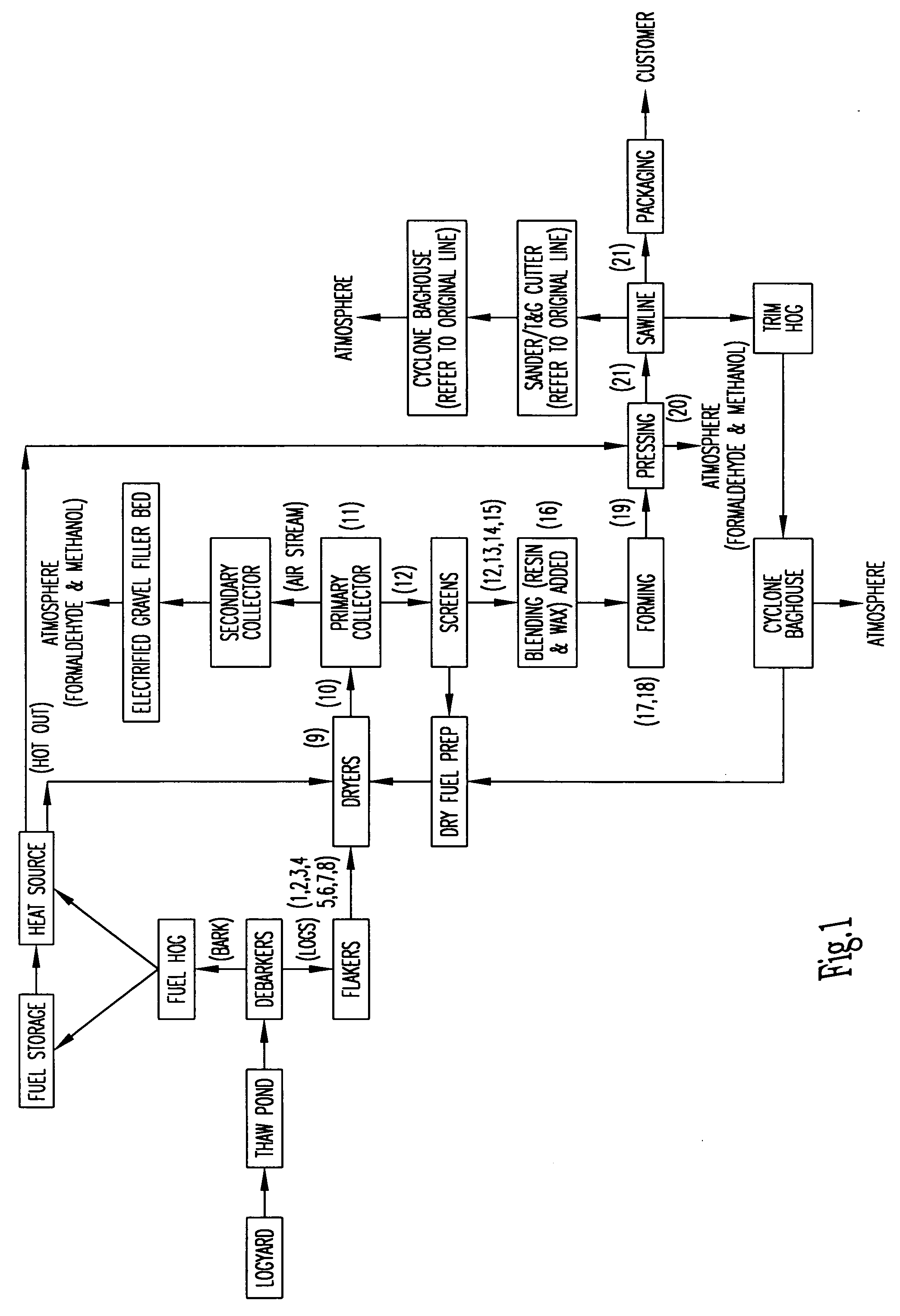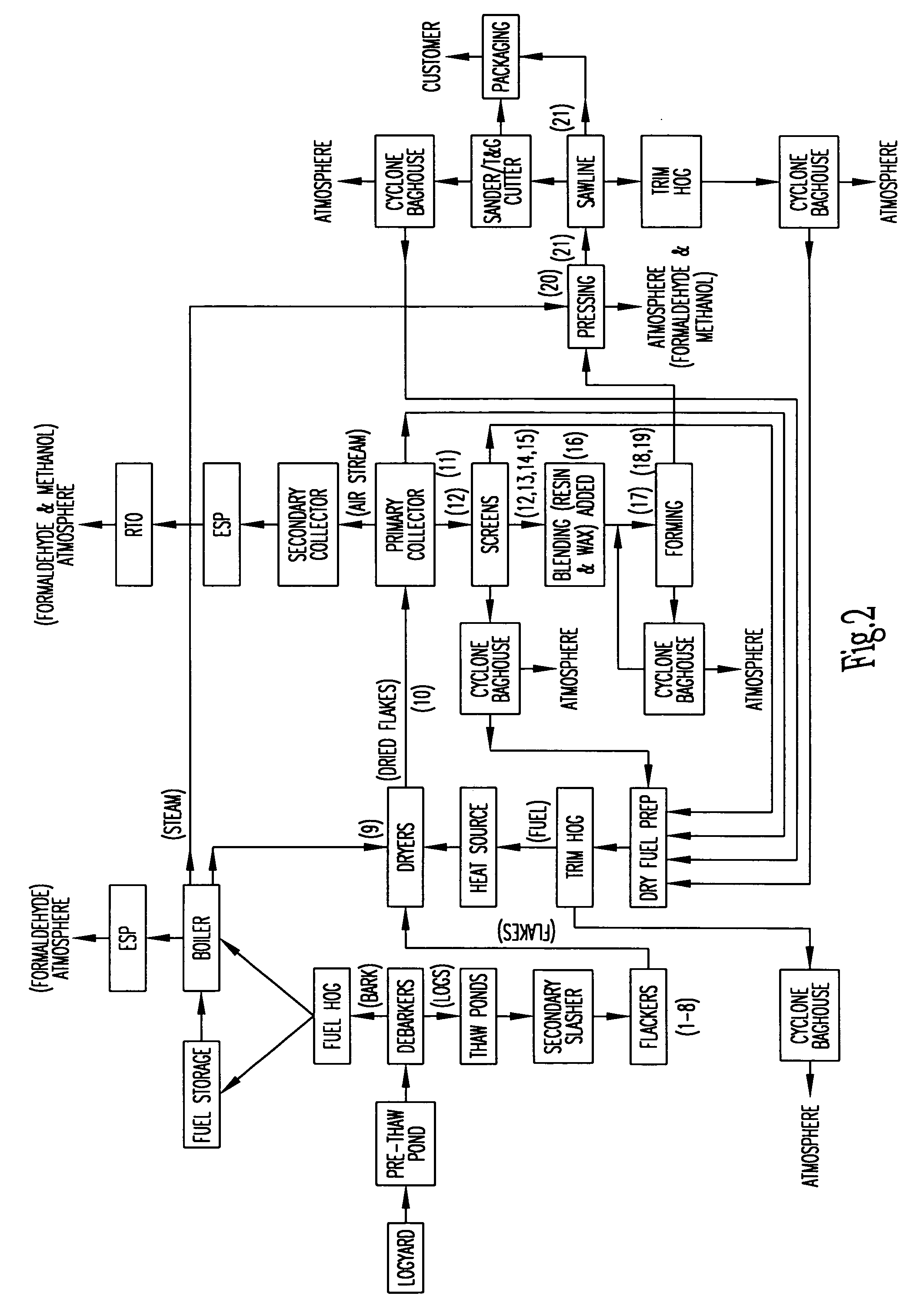Termite resistant and fungal resistant oriented strand board and methods for manufacturing
a technology of oriented strands and termites, which is applied in the direction of wood impregnation details, polymerisation impregnation, organic active ingredients, etc., can solve the problems of osb, osb is susceptible to decomposition by both termites and fungus, and the compound is either extremely poisonous or unsuitable, so as to achieve the effect of cur
- Summary
- Abstract
- Description
- Claims
- Application Information
AI Technical Summary
Benefits of technology
Problems solved by technology
Method used
Image
Examples
Embodiment Construction
The present invention provides a wood-based composite panel (e.g., oriented strand board or plywood) and processes for making the same. The wood-based composite panel includes at least one of a fungicide and a pesticide. The fungicide, pesticide, or combination thereof can be less expensive, easier to handle, more chemically compatible with suitable resins, more environmentally friendly and / or less toxic than many known fungicides and pesticides.
The fungicide, pesticide, or combination thereof retains its effectiveness during the manufacturing of the wood-based composite panel and over the extended periods of time typically encountered with the lifespan of the wood-based composite panel (e.g., up to about 25 years, up to about 50 years, or up to about 100 years). Specifically, during the manufacture and over the lifespan of the wood-based composite panel of the present invention, the fungicide, pesticide, or combination thereof remains stable in the presence of the resin. As such...
PUM
| Property | Measurement | Unit |
|---|---|---|
| Temperature | aaaaa | aaaaa |
| Temperature | aaaaa | aaaaa |
| Temperature | aaaaa | aaaaa |
Abstract
Description
Claims
Application Information
 Login to View More
Login to View More - R&D
- Intellectual Property
- Life Sciences
- Materials
- Tech Scout
- Unparalleled Data Quality
- Higher Quality Content
- 60% Fewer Hallucinations
Browse by: Latest US Patents, China's latest patents, Technical Efficacy Thesaurus, Application Domain, Technology Topic, Popular Technical Reports.
© 2025 PatSnap. All rights reserved.Legal|Privacy policy|Modern Slavery Act Transparency Statement|Sitemap|About US| Contact US: help@patsnap.com


